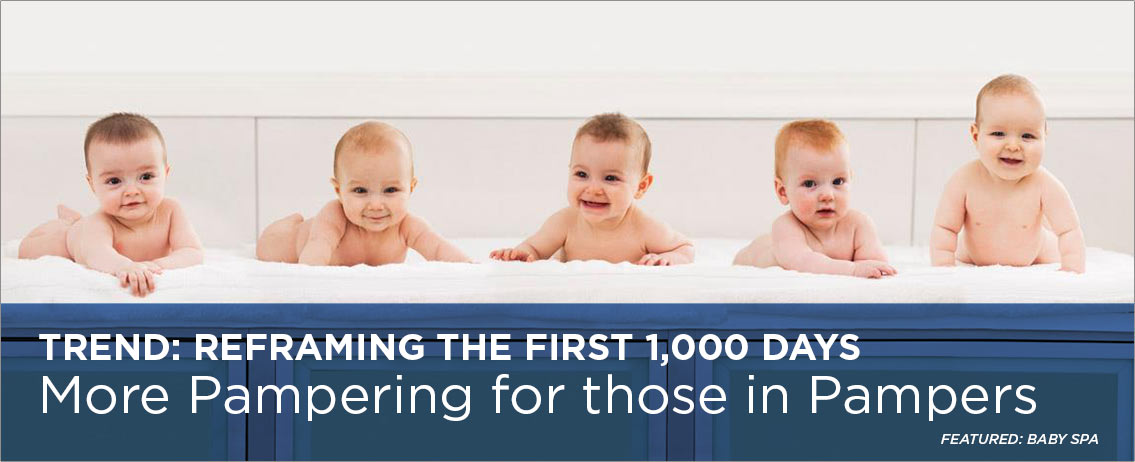TREND: Reframing the First 1,000 Days

More Pampering for those in Pampers
There have been numerous studies on how touching—or lack of touching—can affect a baby’s development—with human touch having a special power for premature babies. Preterm birth is now the single most important cause of neonatal deaths (babies under 28 days) and the second leading cause of death in children under age five. Diverse factors contribute to premature births, including air pollution. But the good news is that, in controlled studies conducted around the world, there is greater weight gain and other wellbeing measures in preterm newborns that received moderate pressure massage therapy.
Tiffany Field, PhD, director of the Touch Institute at the University of Miami, pioneered the science of touch, and she explained her groundbreaking study on the use of massage on premature babies to delegates at the 2017 Global Wellness Summit. “Our research—and the research of hundreds around the world—found that if you massage premature babies twice a day, for 10 days, they will gain 47 percent more weight and be discharged from the hospital six days earlier. The cost-benefit analysis shows $4.8 trillion savings in hospital costs.”
In addition, a study conducted by a research team at the University of British Columbia showed that the amount of touch received by all babies could affect them at the molecular level, and these effects can last for years. According to the study, published in Development and Psychopathology, babies who received less physical contact and were more distressed at a young age may experience epigenetic changes that negatively affect gene expression. Lack of touch, then, appears associated with lifelong health issues.
So, more parents of preemies are embracing massage, but so are parents of newborn babies and toddlers with normal birth weights. In an article for Parents Magazine, Field explains massage stimulates the babies’ central nervous systems and causes their brains to produce more serotonin, a feel-good chemical, and less cortisol, the killer stress hormone.
The Trend: more touch, more massage, for our very youngest people.
Forecasting The Future
We predict that more medical professionals will recommend wellness treatments and techniques, such as massage and hydrotherapy, for babies. For instance, massage will be a go-to choice to treat babies and children of all ages suffering from injury, sleeplessness or pain.
We will see more dedicated “baby spas,” such as Baby Spa with locations in Australia, Madrid, India, South Africa; the brand-new Amazing Baby Spa in Miami Beach; or Float Baby in Houston. These spas tend to combine hydrotherapy (with babies floating in individual tubs, wearing special floatation devices around their necks to keep their heads above water) and neonatal massage, performed by therapists and/or their parents, who are coached by an instructor. These spas’ clients, as young as two weeks old, are often brought in for floating/massage every week.
In general, more parents will turn to the same wellness therapies that have improved their own lives to add more wellbeing to their children’s formative years. Equipped with more resources than in the past, these wellness-focused moms and dads recognize that they can set the stage for a healthier life at the very earliest age. For instance, group exercise classes like Stroller Strides®, a total-body workout for moms and dads with kids in tow that entertains little ones with songs and activities, will continue to grow in popularity. Mom + dad + baby yoga classes will also become more mainstream.
This is an excerpt from the TRENDIUM, a bi-weekly communication exploring the wellness trends identified in the 2018 Global Wellness Trends Report.
Subscribe to the TRENDIUM | View TRENDIUM Issues
